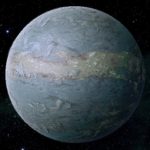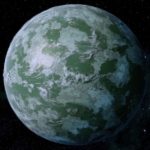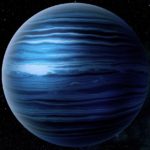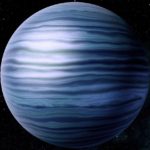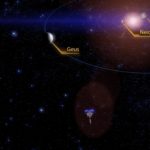System Specs:
- Stellar Mass: 0.458 Sol Masses
- Stellar Class: M V
- Luminosity: N/A Sol
- Planets: 5
- Moons: 37
- Asteroid Belts: 0
- Asteroids: 0
- Objects: 0

Kriseroi’s worlds sport only moderate resources on average. Theonax is the exception, with particularly high amounts of platinum.
While Neidus is habitable, nobody has settled there yet. Tenoth, Uzin, and Uzin’s moon Chithess are believed to have drifted into the system at different points, though Tenoth is believed to collide with Geus in a few billion years.
–
Planets Directory:
- Neidus
- Theonax
- Uzin
- Geus
- Tenoth
–
Neidus:
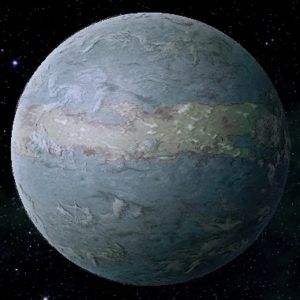
- Orbital Distance: 0.1 AU
- Orbital Period: 0.1 Earth-years
- Keplerian Ratio: 0.1
- Radius: 4,875 km
- Day Length: 0.1 Earth-hours
- Atmospheric Pressure: 0.84 atm
- Surface Temp: 2 °C
- Surface Gravity: 0.87 g
- Mass: 0.504 Earth-masses
Neidus lies improbably close to the red dwarf Kriseroi. This allows it to approach habitability, though it is quite frigid. It is tidally locked, with a “hot pole” and a “cold pole.” Along the terminator, the temperature averages just above freezing. On the lee side, the temperatures are well below freezing.
Neidus has developed a limited native ecology. Much of it clusters, permanently attached, around geothermal vents. There are, however, more advanced forms of life. Several arthropodal herbivore species wander back and forth across the terminator, as they require nutrients available in both environments for sustenance. More dangerous are the omnivorous predator species that devour the arthropods. Most animal life on Neidus has limited vision, but finely-developed thermal sense.
–
Theonax:
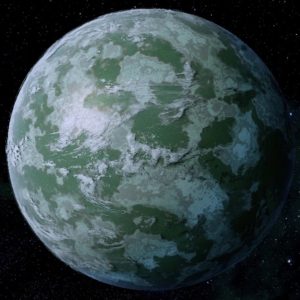
- Orbital Distance: 0.18 AU
- Orbital Period: 0.1 Earth-years
- Keplerian Ratio: 0.583
- Radius: 10,442 km
- Day Length: 69.9 Earth-hours
- Atmospheric Pressure: 1.3 atm
- Surface Temp: −70 °C
- Surface Gravity: 1.3 g
- Mass: 3.459 Earth-masses
Theonax’s surface is covered by water and ammonia-hydrate ices, which are constantly repaved by cryovolcanic processes. The world’s size and density suggest the core contains heavier elements, and retains much of the heat of the system’s formation.
–
Uzin:

- Orbital Distance: 0.31 AU
- Orbital Period: 0.3 Earth-years
- Keplerian Ratio: 0.331
- Radius: 31,982 km
- Day Length: 15.2 Earth-hours
- Atmospheric Pressure: N/A atm
- Surface Temp: N/A °C
- Surface Gravity: N/A g
- Mass: N/A Earth-masses
- Satellites: 37
A typical methane-ammonia ice giant, Uzin has 37 moons of various sizes. Chithess, one of the largest, orbits at a retrograde, suggesting it was a planetesimal that was captured by the gas giant gravity well. The planet itself is believed to be an extrasolar capture as well, though millions of years before Chithess came on the scene.
Evidence collected by planetary geologists suggest that Chithess was for many centuries a water-world, heated by tidal flexing as its orbit circularized around Uzin. The planetary ocean, once hundreds of kilometers deep, must now be frozen solid. Some have recommended drilling test bores to see if life ever developed in Uzin’s seas, but the question is considered academic.
–
Geus:
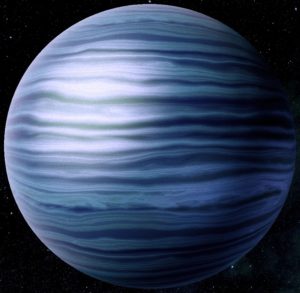
- Orbital Distance: 0.64 AU
- Orbital Period: 0.9 Earth-years
- Keplerian Ratio: 0.324
- Radius: 33,036 km
- Day Length: 9.9 Earth-hours
- Atmospheric Pressure: N/A atm
- Surface Temp: N/A °C
- Surface Gravity: N/A g
- Mass: N/A Earth-masses
Geus is another methane-ammonia gas giant, very similar to its near-twin, Uzin. It presents a nearly featureless, robin-egg-blue face to the universe.
–
Tenoth:
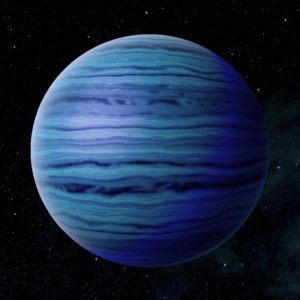
- Orbital Distance: 1.86 AU
- Orbital Period: 2.6 Earth-years
- Keplerian Ratio: 0.952
- Radius: 1,411 km
- Day Length: 17.9 Earth-hours
- Atmospheric Pressure: Trace atm
- Surface Temp: −220 °C
- Surface Gravity: .09 g
- Mass: 0.004 Earth-masses
Tenoth is little more than a glorified “ice dwarf” that has drifted inwards from Kriseroi’s Oort Cloud over the millennia. Its extremely elliptical orbit is ultimately unstable. Computer projections suggest it will impact the atmosphere of Geus in a few billion years.
–
–
video

